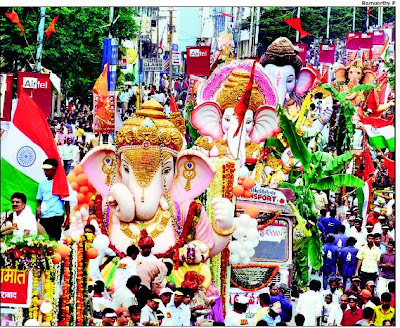
Picture - Deccan Chronicle
Youngsters going to school. This is a common scene during morning and evening hours.
In 1967, Paul Ehrlich, author of the book The Population Bomb, and currently a Stanford professor wrote - "India couldn't possibly feed two hundred million more people by 1980. ..... I have yet to meet anyone familiar with the situation who thinks that India will be self-sufficient in food by 1971." But India did manage to become not only self-sufficient but also a leading agricultural nation as a result of the Green Revolution. Looking at the picture above, you cannot imagine that the 58th International Astronautical Congress took place recently in Hyderabad. American astronaut of Indian origin Sunita Williams was here to attend it. Or looking at this picture, you cannot imagine that many of the world's leading aerospace companies are planning to open a global R&D hub in India. The population in Europe, Japan, China and Singapore is graying rapidly amidst a fall in birth rates, whereas India has a large number of people under 25. This will be the workforce of the future. Till 2030 or 2040, anyway.






